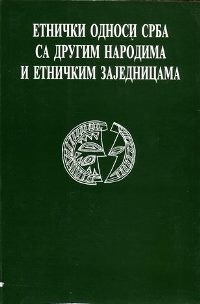Досељавање и живот Срба на подручју данашње Словеније од XV до почетка XX века
Inhabiting and Life of the Serbs in the Area of Today's Slovenia in the Period Between the 15th Century and the Beginning of the 20th Century
Author(s): Nikola Milovančev
Subject(s): Ethnohistory, Social history, Inter-Ethnic Relations, Ethnic Minorities Studies
Published by: Етнографски институт САНУ
Summary/Abstract: Medieval migrations of Serbs caused by Turkish progression were one of the reasons for mass inhabiting of the Serbs in the areas of today's Slovenia and neighbouring regions (Istra, Venice, Julianska Krajina). Estates of the counts of Celje were visited by Serbian squires. They were also inhabited by the Serbs from Lika and family traditions can tell about this. The writer has some data concerning these counts and they refer to the existence of Orthodox people in Pounje and Lika before Turkish progression. There was mass moving of the Serbs from Bosnia and Dalmatia to @umberak, Bela Krajina and [tajerska in the 16th century. Some old toponims and inhabited places have names divided from etonims Rac = Ra~ani, the Serb. The appearance of Orthodox religion in Dolenjska held up partly inhabited Serbs. Spreading of the union (Greek - Catholic) was done carefully. Assimilation of the Serbs was faster in the areas where there were less of them, for example in [tajerska. When in the 18th and 19th century Turkish threat passed, many of the Serbs became a part of majority of the people. They lost both their national identity and religion. Exceptions were only the Serbs in Bojanci and Marindol (Bela Krajina) and some intellectuals from Ljubljana.
Book: Етнички односи Срба са другим народима и етничким заједницама
- Page Range: 187-205
- Page Count: 19
- Publication Year: 1998
- Language: Serbian
- Content File-PDF

